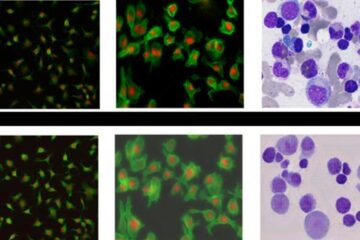Brain holds internal map of body

In a study published in the latest issue of Current Biology, University College London (UCL) scientists have shown that the human brain holds and continuously updates an internal map of the body. The UCL team hope their findings will help explain how the processes in the brain which create a coherent body map may go wrong in people with neurological or psychiatric disorders.
Using a body illusion to fool volunteers, UCL researchers found that volunteers’ brains rapidly adjusted the processing of touch information to match information from proprioception –the position to the limbs relative to the body.
The team from the UCL Institute of Cognitive Neuroscience used a method called tendon vibration to distort volunteers’ sense of their own body. When the biceps tendon of the right arm was vibrated, volunteers felt within seconds that their right elbow was rotating away from the body, even though the arm was actually quite still. If the volunteers held their left index finger with their right hand while this happened they felt their left index finger getting longer, as they felt their arm move.
The team then tested how these bodily illusions rearranged the body’s sense of touch, While touching volunteers with two metal rods on the left index finger, scientists asked them to judge whether the distance between the rods was greater or smaller than the distance between two additional rods touched on the forehead. When tendon vibration made the index finger seem longer than it really was, volunteers overestimated the tactile distance on the index finger, relative to the forehead.
Professor Patrick Haggard says: “The brain has to combine information coming from different senses to produce a coherent sense of self. It is performing a constant juggling act in order to make sense of the different sensory inputs it receives.
“We know that the brain holds a long-term body image which specifies the shape and size of the limbs and which can slowly evolve through development till the body reaches its adult size. However, the stimulation our bodies receive from clothes and from the objects we touch changes all the time and the brain also needs to keep track of this. Our study shows that the brain has a more dynamic, short-term representation of the body – a constantly updating internal map – which gives us a sense of our body as a coherent self.
“We normally perceive our bodies as a coherent background to our mental life, but some patients with psychiatric disorders may have disorganised and unusual feelings about their own body. We hope that we can use our findings to understand how the brain continually recreates a coherent body map out of all the sensations it receives, and how this process may go wrong for some people.”
Media Contact
More Information:
http://www.ucl.ac.ukAll latest news from the category: Life Sciences and Chemistry
Articles and reports from the Life Sciences and chemistry area deal with applied and basic research into modern biology, chemistry and human medicine.
Valuable information can be found on a range of life sciences fields including bacteriology, biochemistry, bionics, bioinformatics, biophysics, biotechnology, genetics, geobotany, human biology, marine biology, microbiology, molecular biology, cellular biology, zoology, bioinorganic chemistry, microchemistry and environmental chemistry.
Newest articles

Bringing bio-inspired robots to life
Nebraska researcher Eric Markvicka gets NSF CAREER Award to pursue manufacture of novel materials for soft robotics and stretchable electronics. Engineers are increasingly eager to develop robots that mimic the…

Bella moths use poison to attract mates
Scientists are closer to finding out how. Pyrrolizidine alkaloids are as bitter and toxic as they are hard to pronounce. They’re produced by several different types of plants and are…

AI tool creates ‘synthetic’ images of cells
…for enhanced microscopy analysis. Observing individual cells through microscopes can reveal a range of important cell biological phenomena that frequently play a role in human diseases, but the process of…





















